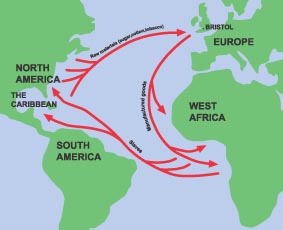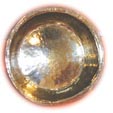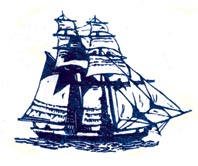|
|
 "The Golden Age"Bristol's business with the New World developed steadily as the old patterns of medieval trade changed. By the 18th century, Bristol was beginning to prosper on trade with West Africa, the West Indies and North America. This trading triangle was made possible by using the prevailing winds and ocean currents of the Atlantic.
 The Slave Trade Brassware produced in the Bristol area, as well as other goods, was traded in Africa for ‘enslaved’ people. They were taken across the Atlantic to work on the sugar, cotton and tobacco plantations of the New World. These commodities had a ready market in Europe. Find out more about the area's role in brass production by visiting Saltford Brass Mill – the best preserved of a group of mills once operating along the Avon corridor.
 Bristol merchants could grow rich on this trade if they were prepared to take the considerable risks involved. Many did, and the building boom that created most of Georgian Bristol took place. Bristol was uniquely placed to 'sew up' trade to the west. It became England's second port. Bristol merchants could grow rich on this trade if they were prepared to take the considerable risks involved. Many did, and the building boom that created most of Georgian Bristol took place. Bristol was uniquely placed to 'sew up' trade to the west. It became England's second port.
Not everyone condoned the slave trade that Bristol managed to hide so well for a further two centuries, however. The inhuman treatment of slaves shipped in appalling conditions had to end as campaigners worked towards abolition. This decline in trade coupled with the constraints of an awkward harbour meant that the port handled fewer ships as the 18th century wore on. Bristol's 'Golden Age' was over.
|
|


